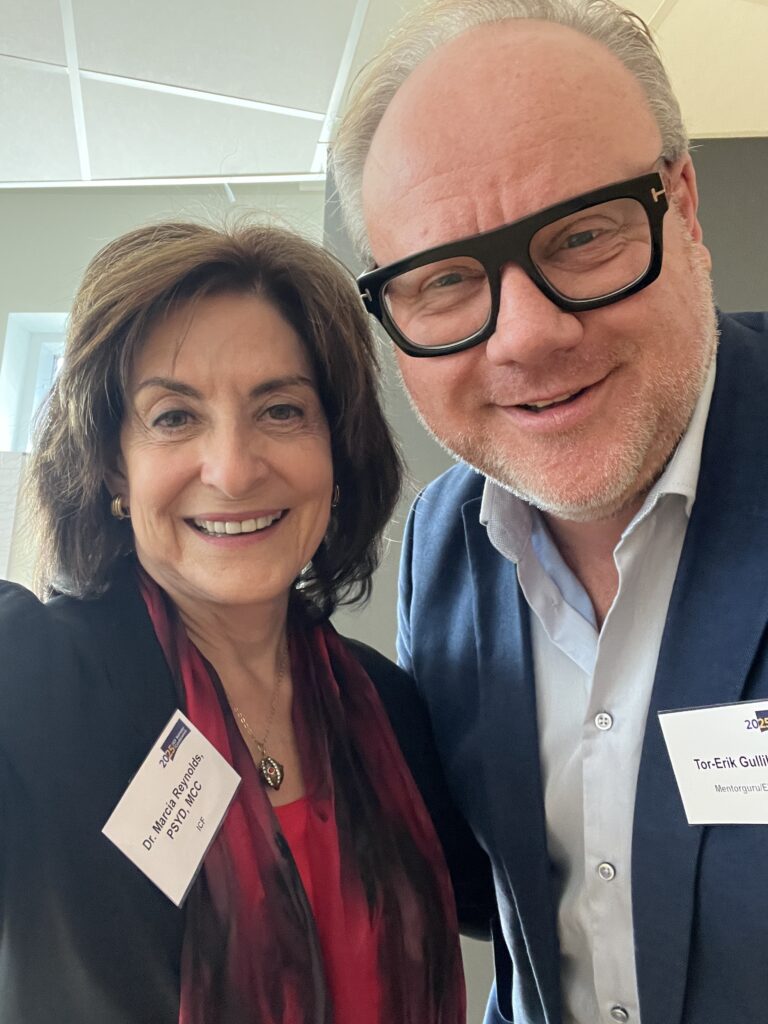
What does it take to be one of the top coaches in the world? In this exclusive conversation, Dr. Marcia Reynolds—recognized globally as a top 5 leadership coach—shares her incredible journey, her groundbreaking insights, and her powerful perspectives on the future of coaching in a rapidly changing world.
From Uncertainty to Mastery: Marcia’s Journey
Marcia Reynolds didn’t start at the top. She began her career facing uncertainties and doubts, much like any aspiring professional. Through resilience, curiosity, and a relentless passion for personal growth, she navigated challenges and fears to emerge as one of coaching’s most influential voices. Marcia candidly shares the pivotal moments and difficult decisions that shaped her remarkable career.
AI and Coaching: Threat or Opportunity?
With artificial intelligence rapidly advancing, many coaches are asking themselves: «What role will I play when technology takes over?» Marcia brings clarity and calm to this question, exploring how AI can become a powerful partner rather than a replacement. She highlights the enduring human qualities—empathy, intuition, and deep emotional connection—that technology cannot replicate.
Bridging the Gap: Leadership in a Chaotic World
Marcia passionately advocates for authentic human connection and leadership rooted in empathy and vulnerability. Her upcoming keynote, «Bridging the Gap: Preserving Humanity in a Chaotic World,» offers practical strategies for leaders and individuals to thrive personally and professionally despite uncertainty. She challenges us to rethink how we lead, live, and love in an increasingly fragmented world.
Conquering Fear: The Heart of Effective Coaching
Fear is inevitable—but what separates outstanding coaches from the rest is how they handle it. Marcia emphasizes the transformative power of embracing vulnerability and authenticity. She shares personal experiences where facing fear directly led to her greatest breakthroughs and successes.
Insight from Bestselling Books
In her acclaimed books, «Coach the Person, Not the Problem» and «Outsmart Your Brain,» Marcia offers profound yet practical tools to help coaches and leaders:
- Understand the critical difference between addressing immediate issues and deeply understanding the person behind the problem.
- Master techniques to overcome limiting beliefs and optimize mental clarity, focus, and performance.
Marcia’s Top Advice for Coaches (New and Experienced!)
Whether you’re just starting your coaching journey or you’ve been in the field for years, Marcia shares her invaluable insights:
- Avoid common pitfalls by focusing on the person rather than just the issue.
- Embrace vulnerability and courageously face your own fears—this authenticity will profoundly impact your clients.
Final Thoughts
Dr. Marcia Reynolds reminds us that the future belongs to those who dare to face uncertainty with curiosity and courage. Coaching isn’t merely about solving problems; it’s about understanding the human beings behind them.
Ready to dive deeper into Marcia’s inspiring insights and actionable strategies? Don’t miss our full conversation—it’s an empowering journey you won’t want to skip!
Stay brave, stay curious, and keep coaching the person, not just the problem.


